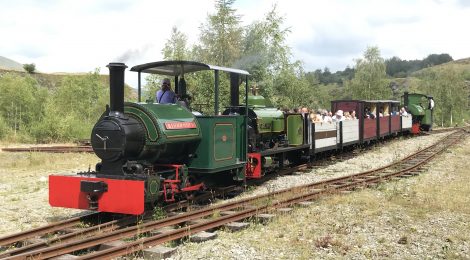
Threlkeld Quarry and Mining Museum 2019…
The annual gala weekend on the narrow gauge (two-foot) railway at Threlkeld Quarry near Keswick in Cumbria has been reported on several times on the blog previously. It offers a weekend of respite from the day-job and is one of the diversions that some of the transport team management enjoy – this being my escape, whilst Matt is off driving on the Ffestiniog & Welsh Highland Railways for a few weeks. It is also fairly ‘local’ to Beamish and we have often managed to combine locomotive visits to the north to make the best use of haulage arrangements etc. I missed the event last year for various reasons, so was pleased to be invited back in 2019 and have a couple of days driving Liassic and Jack Lane around the quarry. A huge amount of background work goes into the event, both by the hosts (and operators of the railway) and those who arrange to loan their engines for the event. Friday is a photo charter day, which produces results usually seen in the railway press, whilst the weekend operation serves to provide a continuous display of steam activity on the line.
With a somewhat pessimistic weather forecast, Saturday arrived wet and cool. Very wet as it turned out. And that is where the photographic coverage begins…
Day 1: Saturday 27th July 2019
Below: The scene on Saturday lunchtime – low cloud and torrential rain…
Below: During the late afternoon the opportunity to take Liassic down the extension arose, this line being a large horseshoe from the present station level down a steep gradient to the location of the original quarry weighbridge. This will be the site of a new museum and visitor centre, as well as the point of commencement of the passenger train rides. Here is the view looking up from the present ‘head of steel’ towards the present station (seen in the first photo in this post, marked by the two traffic cones).
Below: Looking the other way, the PW train is seen in the background, with the route being visible to the right of Liassic’s saddle tank, dropping away to the right. I also understand there is the possibility for a branch here, joining the formation of the original narrow gauge line (to another quarry) which sits on the contour above the roof of the grey van seen here. Plenty of potential for future expansion…
Below: At the close of play, the locomotives were lined up in the rain for some group photographs to be taken.
Day 2: Sunday 28th July 2019
Below: The second day of the gala was attended by far better weather – with most of the day being sunny and warm. This was a relief to all and also saw the visitors arrive in greater numbers too… Here we see Liassic, Jack Lane and Kidbrooke awaiting their turn on the passenger train; the background cloud starting to lift and reveal the stunning scenery this railway enjoys surrounding it.
Below: Kidbrooke was built in 1917 by Bagnalls of Stafford (works number 2043) and was initially used at the Kidbrooke storage depot of the Royal Flying Corps (later Royal Air Force, the depot becoming No.1 Stores Depot) in south-east London. The depot had an extensive two-foot gauge railway network at that time. The locomotive was later sold for use at Oakeley Slate Quarry in Blaenau Ffestiniog, moving to the Ffestiniog Railway in 1961 in derelict condition. In 1970 it was removed to a private property for restoration, later moving to the Yaxham Light Railway in Norfolk where it was returned to steam. It is nearing the end of its ten year boiler certificate, so made a rare appearance away from Norfolk to appear at Threlkeld. It will travel on to two further venues, including the Apedale Valley Railway, to make operating appearances this summer, before returning to its Yaxham home.
Below: Liassic seen in the sunshine, with the original locomotive shed as a backdrop. Liassic was built in 1923 for use at Southam Cement Worksnear Rugby in Warwickshire. It was later saved for preservation and departed for Canada where it was to spend five decades in a private collection. This was later dissolved, with Liassic one of four locomotives from this source to join the Statfold Barn collection, in unrestored condition. It was restored to operational condition at Statfold Barn in 2017. Four of the Southam Pecketts survive, with, in addition to Liassic, 1903 built Jurassic (Lincolnshire Coast Light Railway, Skegness, operational), 1911 Triassic (Bala Lake Railway, static display) and 1913 built Mesozoic (Bromyard & Linton Railway, Herefordshire, unrestored ) being preserved.
Below: One of the classic narrow gauge scenes today? An original locomotive shed with a compliment of industrial narrow gauge locomotives ready to tackle the steep and sinuous route into the quarry, with one of the most stunning backdrops on any heritage railway in the UK. When you can see it!
Below: The original locomotive shed is a popular backdrop for photogprahs, this being the view to the rear, which has equal appeal I feel! Note the cloud beginning to disperse from the slopes of Blencathra in the distance.
Below: The headshunt at the lower station is something of a habitual location for locomotive portraits! I have many taken over the years here, so Jack Lane obliges with the sunlit slopes of Blencathra in the background, flowing down towards the town of Keswick (just off the image to the left) and Derwent Water.
Below: A popular combination on the Sunday, largely as repeated trips assisted with moving the crowds, was Kidbrooke and Jack Lane on the top of the train, and Sir Tom on the rear – better placed for braking on the descent. The Statfold locos are fitted with a compatible brake valve so can also lead on the descent if required – though a single loco-length headshunt can impede running around a train at the top level, in an acceptable time for a quick return.
Below: Taken from the footplate, as above, but turning 100 degrees or so, this is the view across to Keswick and Derwent Water. In the middle foreground, from the orange excavator and running diagonally to the left and upwards in this view, is the trackbed of the extension seen earlier. It will offer quite a different view for passengers, looking out over the landscape rather than internally to the quarry workings.
Below: Kerr Stuart ‘Wren’ class 0-4-0ST Roger was built in in 1918, works number 3128, and supplied to the National Smelting Company’s zinc refinery at Avonmouth. In 1959 it was sold out of service, within a year being sold again, to a Canadian collector in Ontario. In 2013 the collector dispatched the locomotive back to the UK for overhaul by the Statfold Barn Railway, this being completed shortly afterwards. Returning to Canada, the local regulations proved unable to to accommodate the boiler design (which is perfectly safe and very well proven over the last century of operation!), and the locomotive was sold to the Statfold Barn Railway, returning to England in 2016. It carries the livery of the Imperial Smelting Company, and like Jack Lane it has been a visitor to Beamish in recent years. It is seen here in the traditional ‘pose your loco’ location outside the engine shed at Threlkeld.
Below: At the end of the day Jack Lane and Liassic are seen on the branch to the loading pad on the middle level, being passed by Roger and Sir Tom on the last passenger working of the weekend.
Below: After partial disposal, the two locomotives drove onto the low-loader and were then prepared for their journey back to Staffordshire. Roger and Kidbrooke were to follow this load, also Statfold Barn bound. Thus concluded another superb weekend in Cumbria – with thanks to our hosts and the organisers of the event for yet more enjoyable steam ‘therapy’!


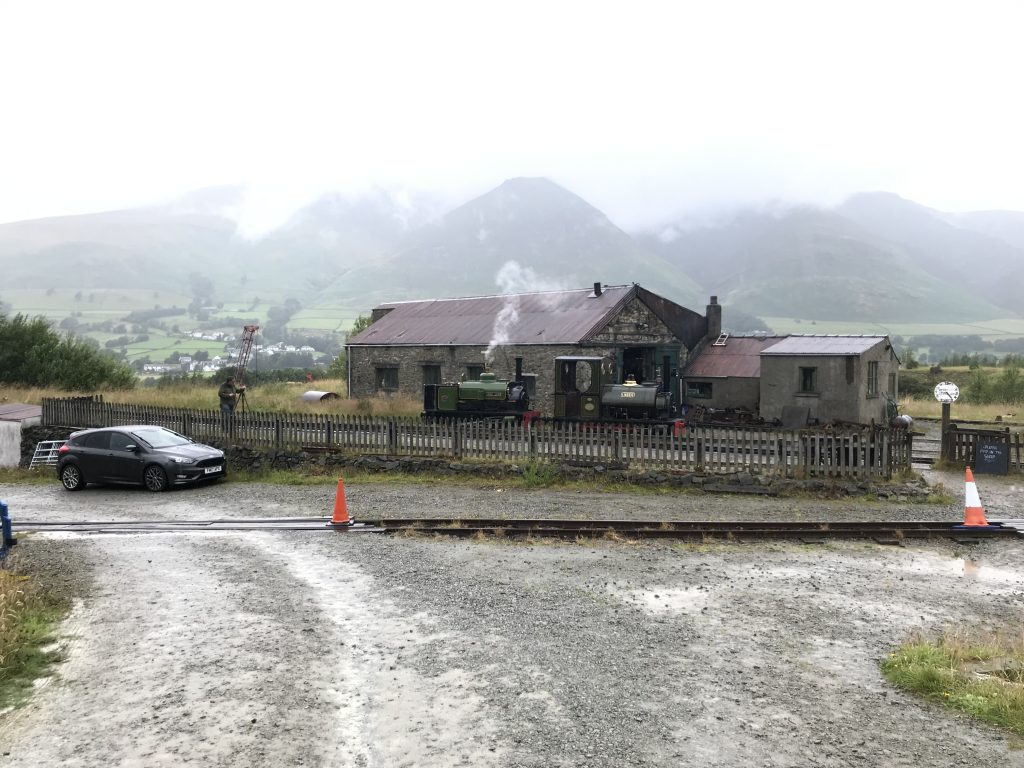
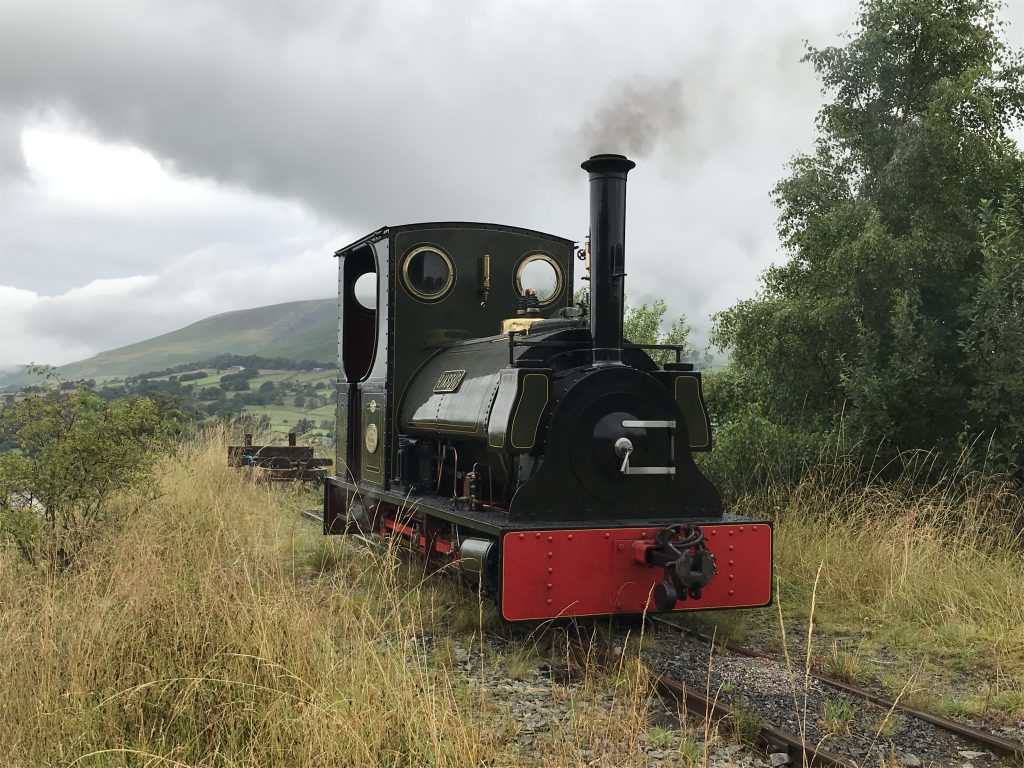
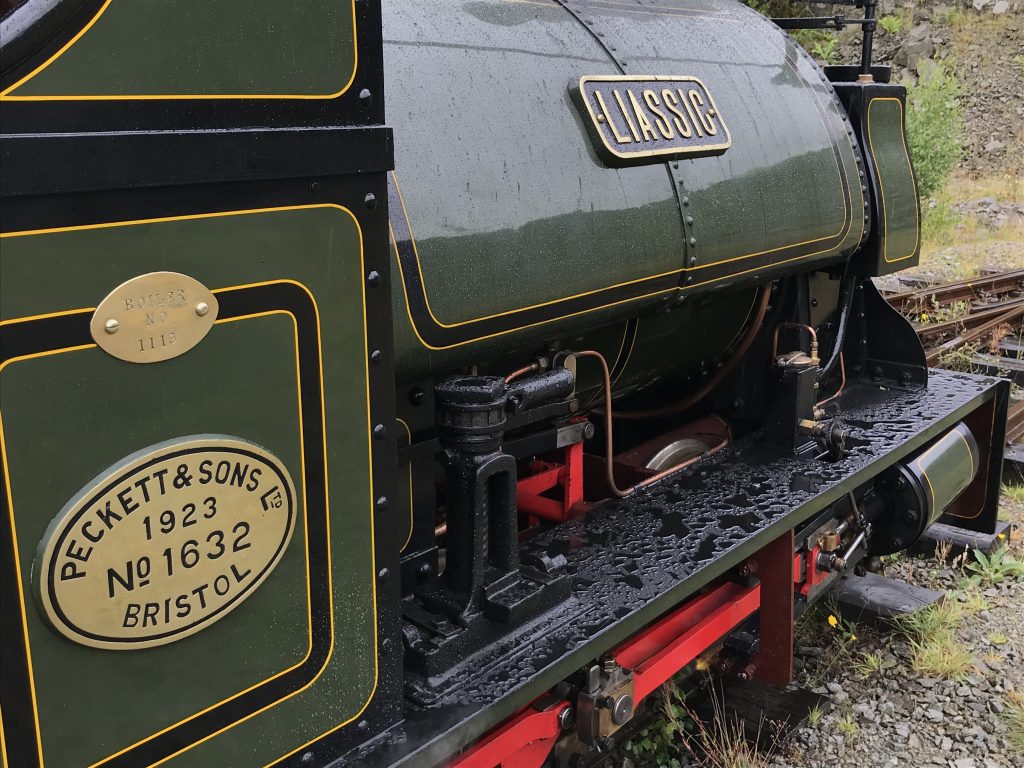
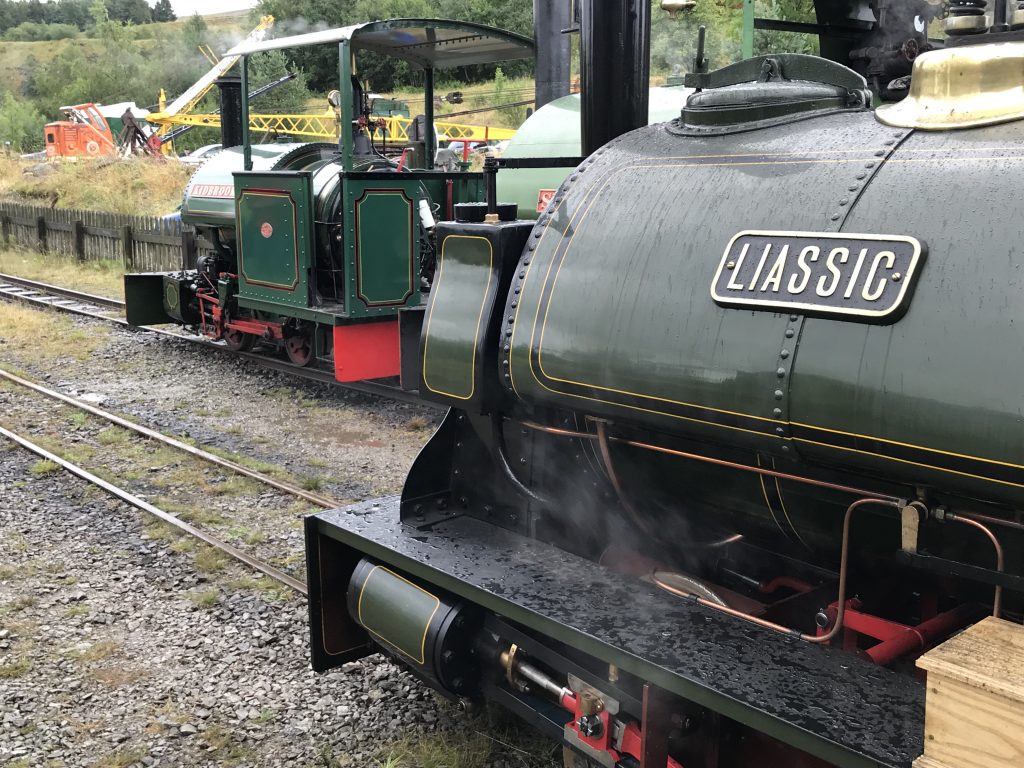
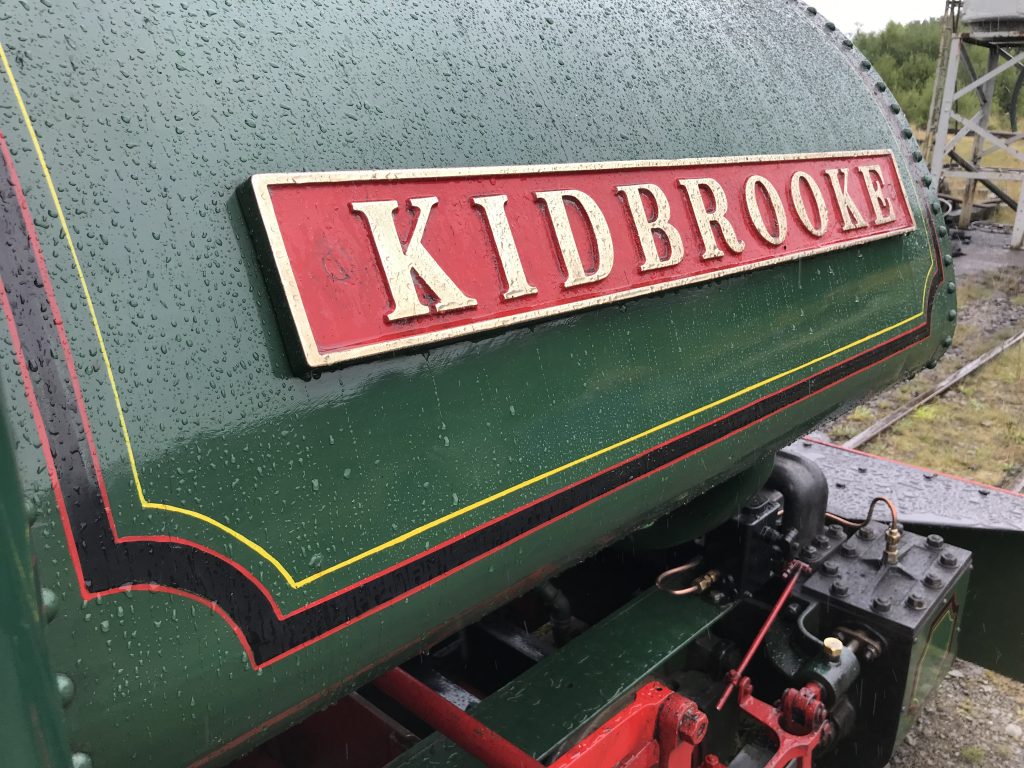
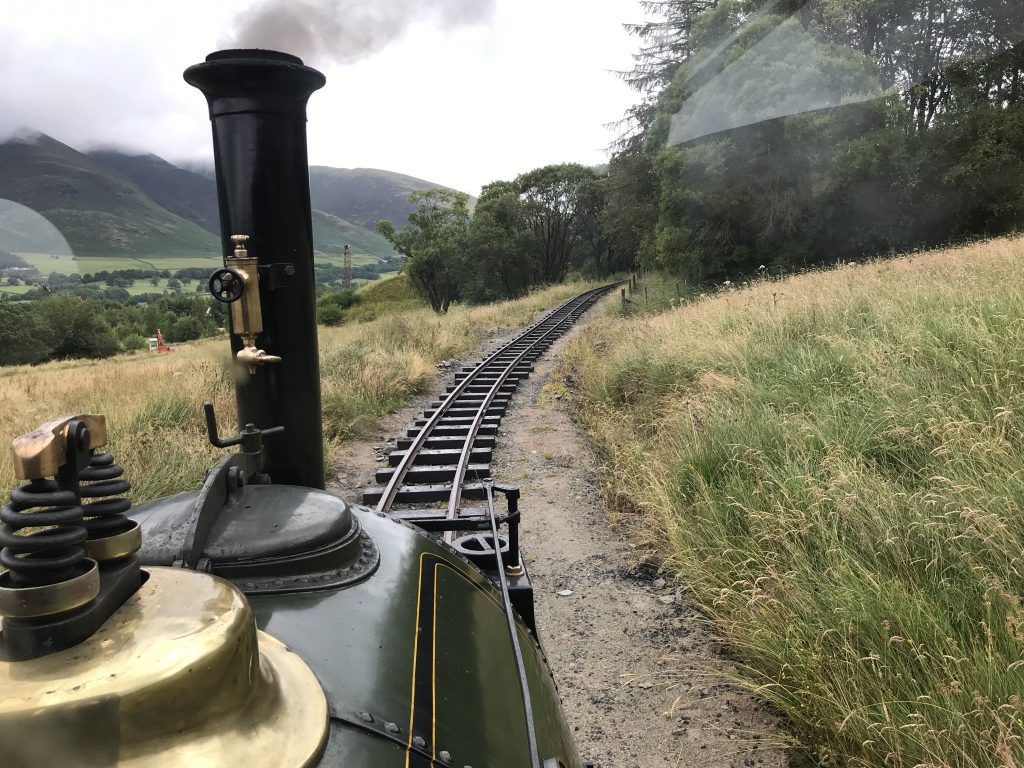
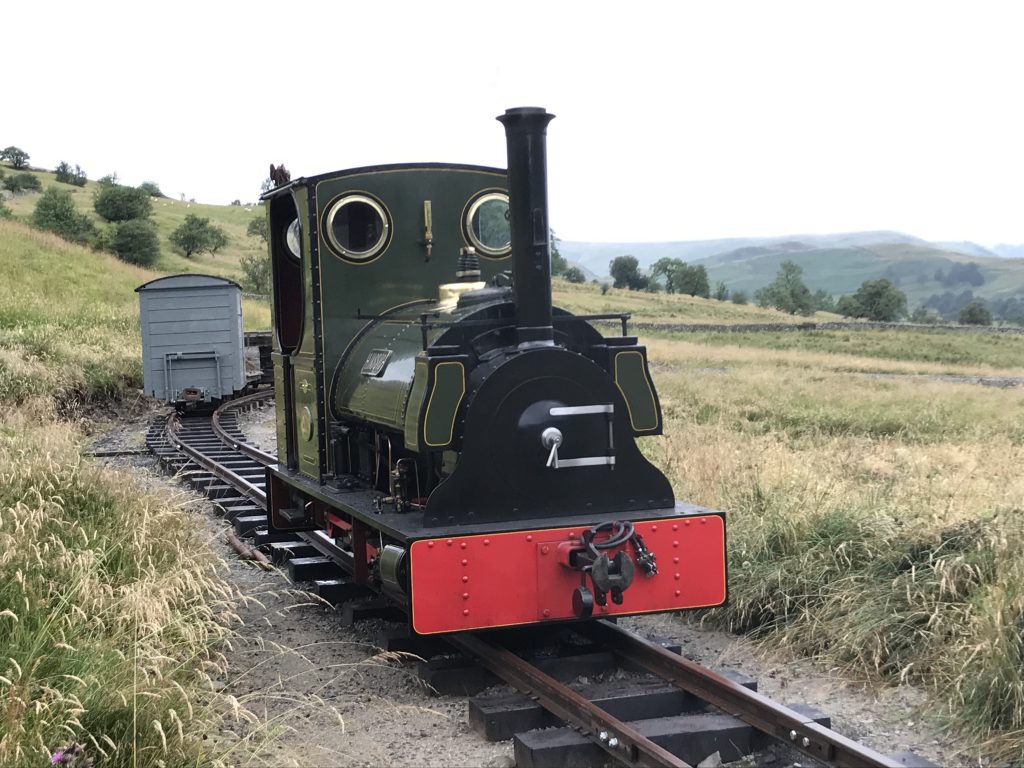

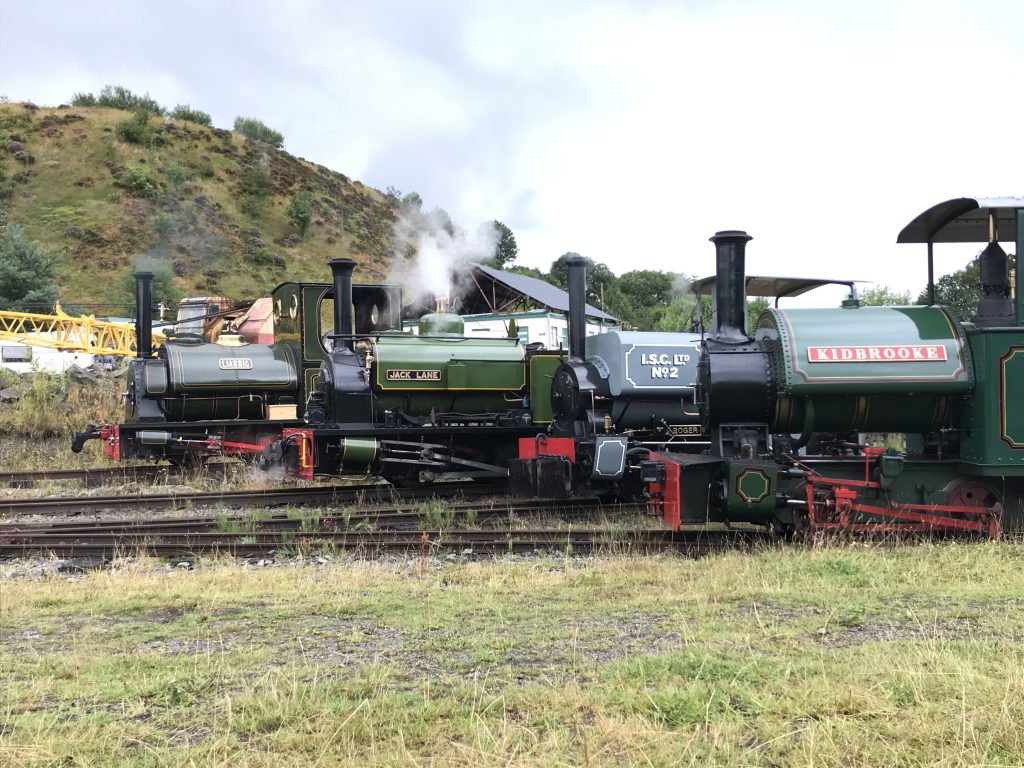
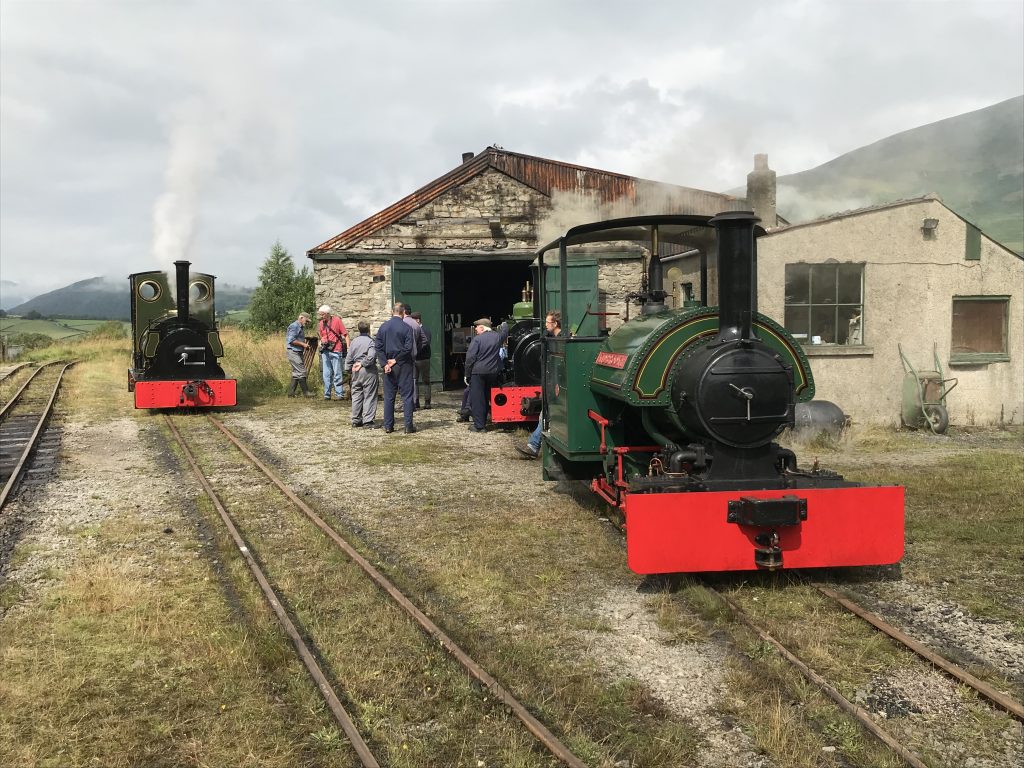
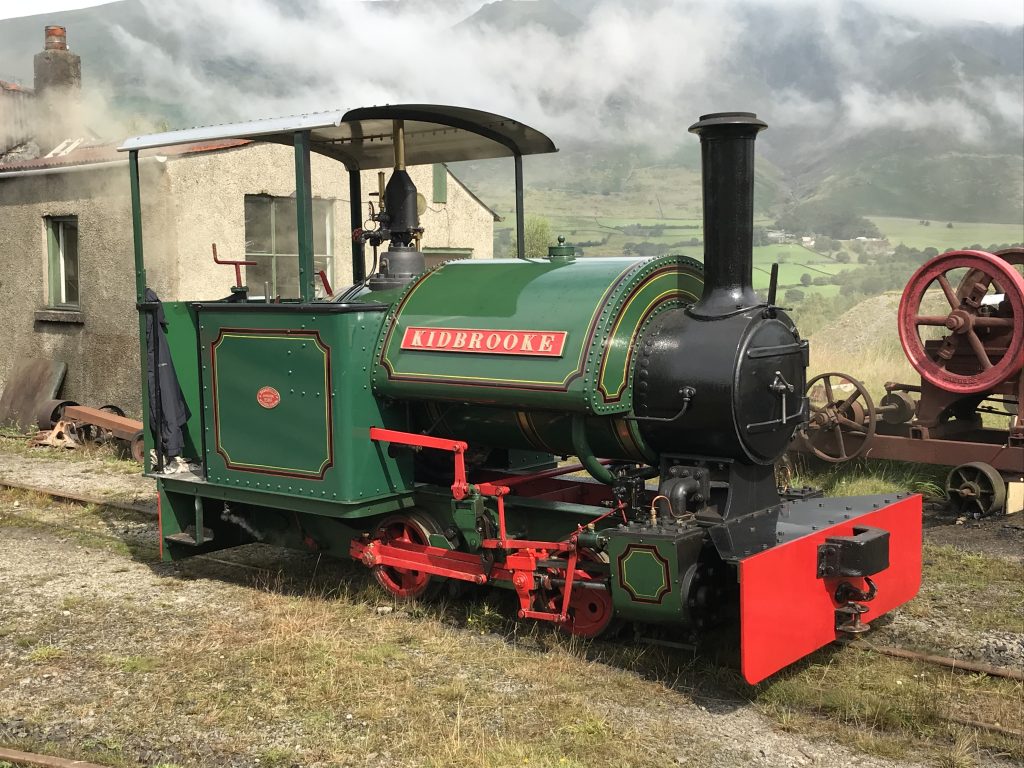
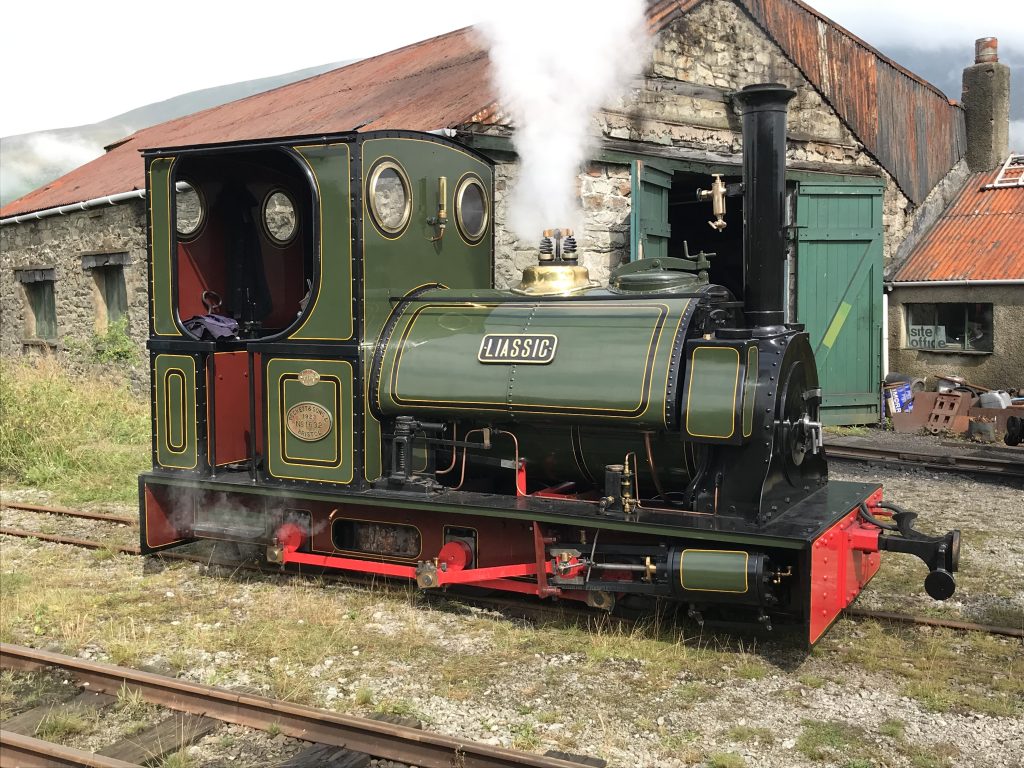
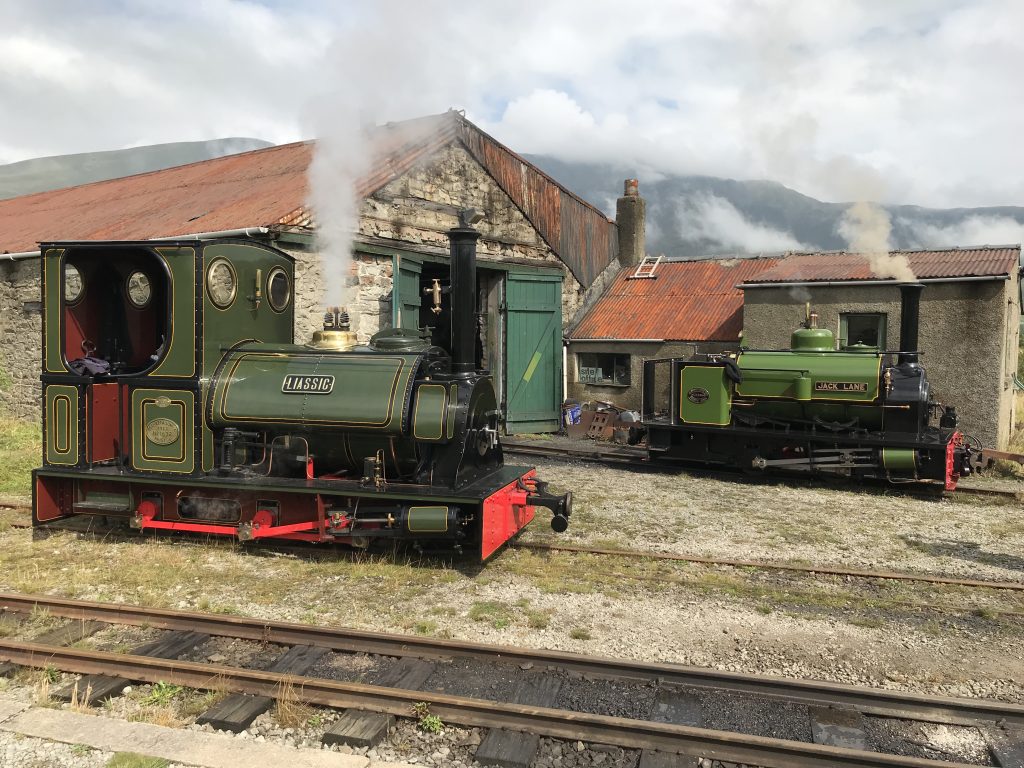
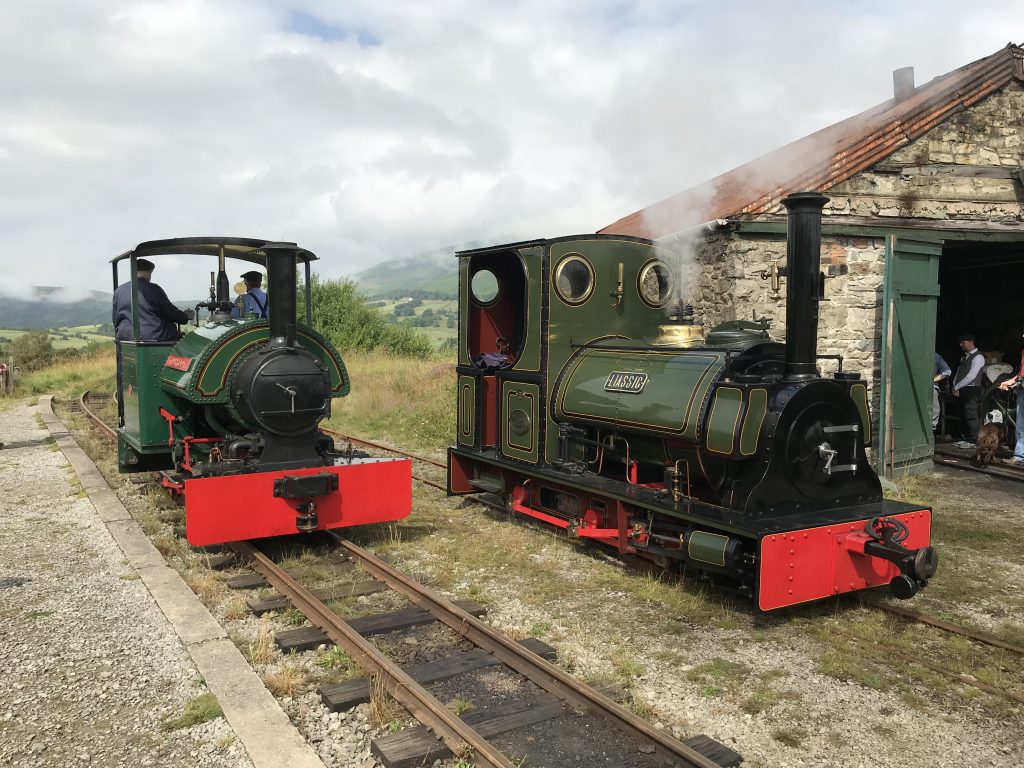

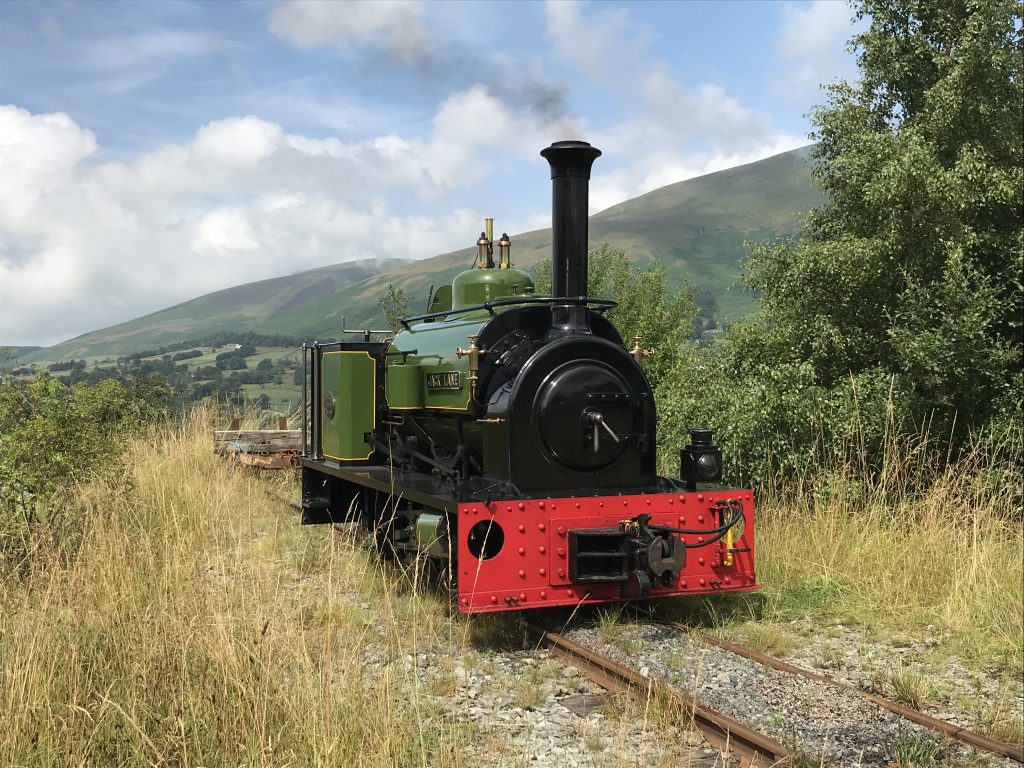
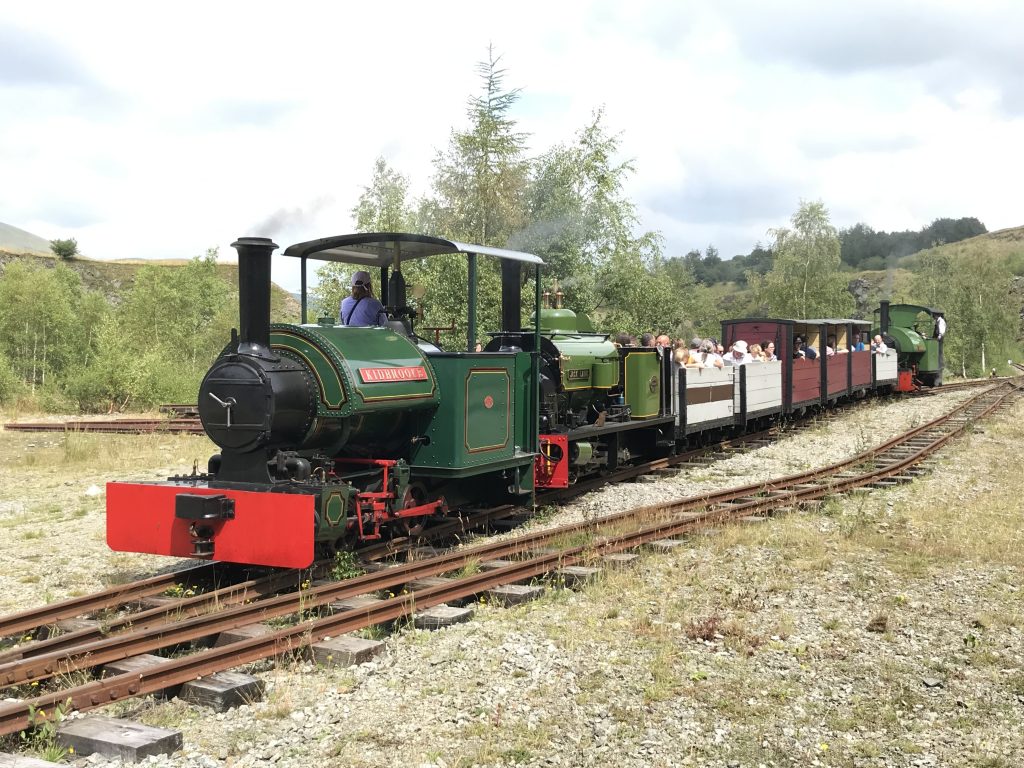
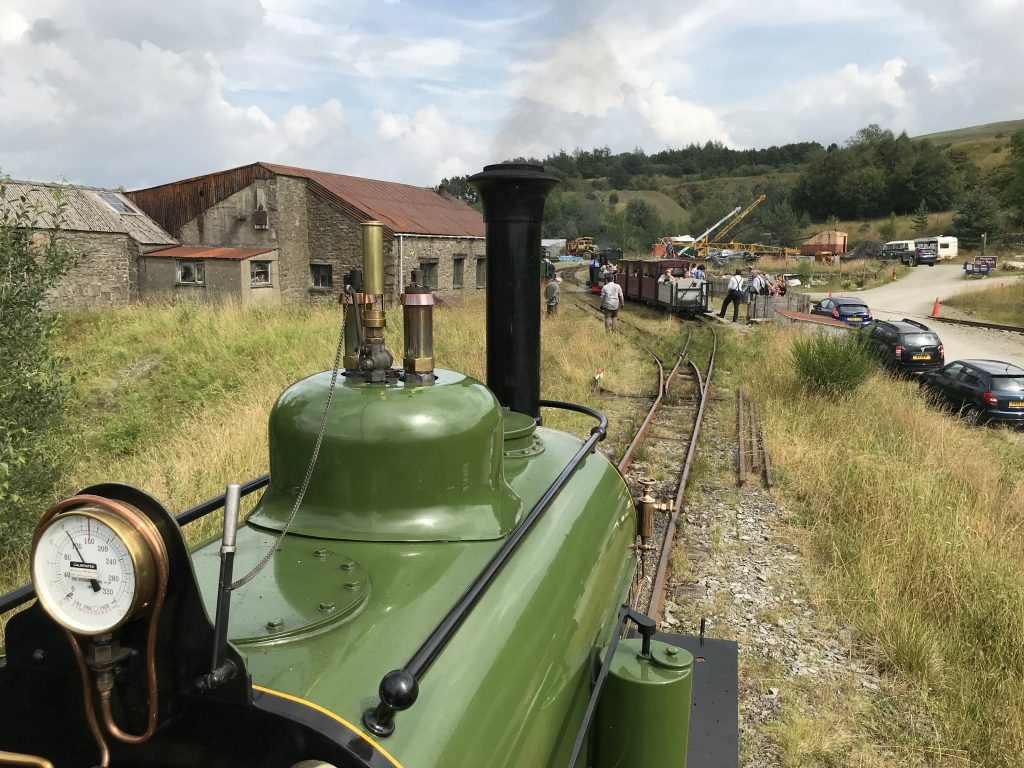
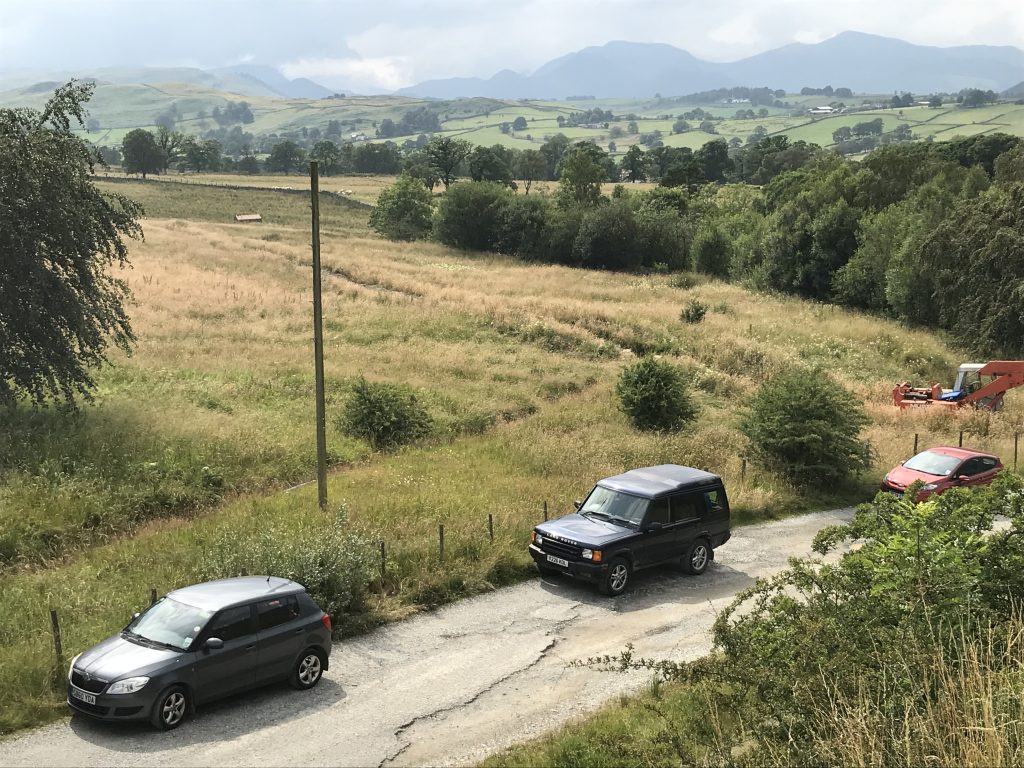
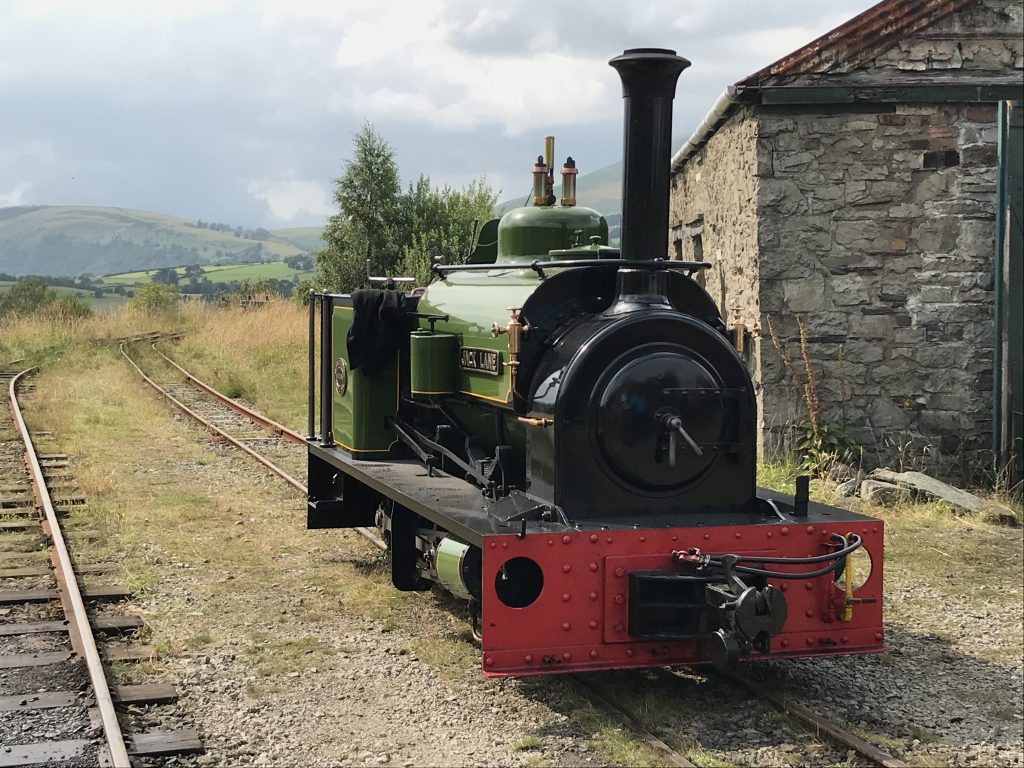


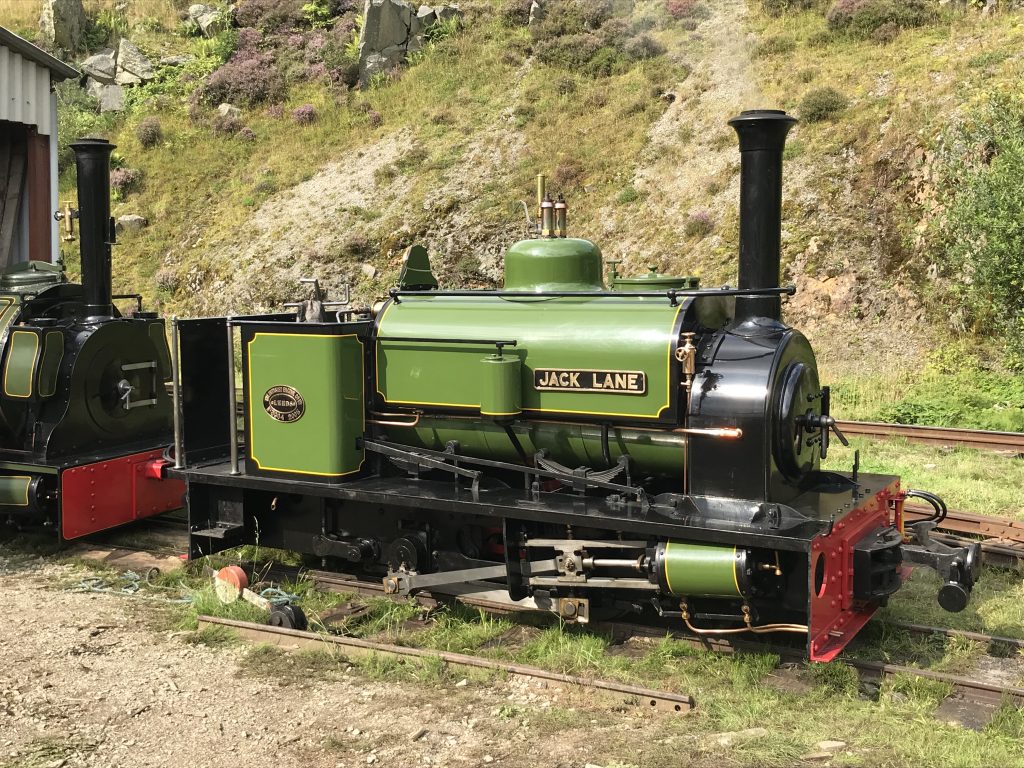
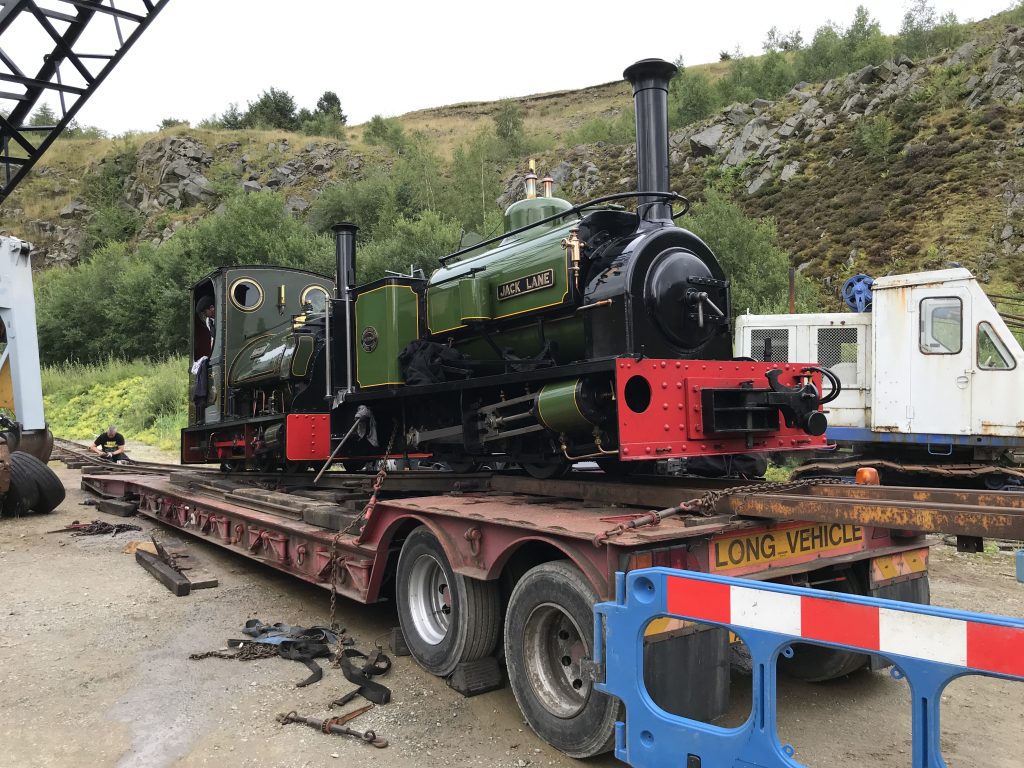





What a fantastic blog and super photos. Must have been an incredible event. Many thanks for sharing.